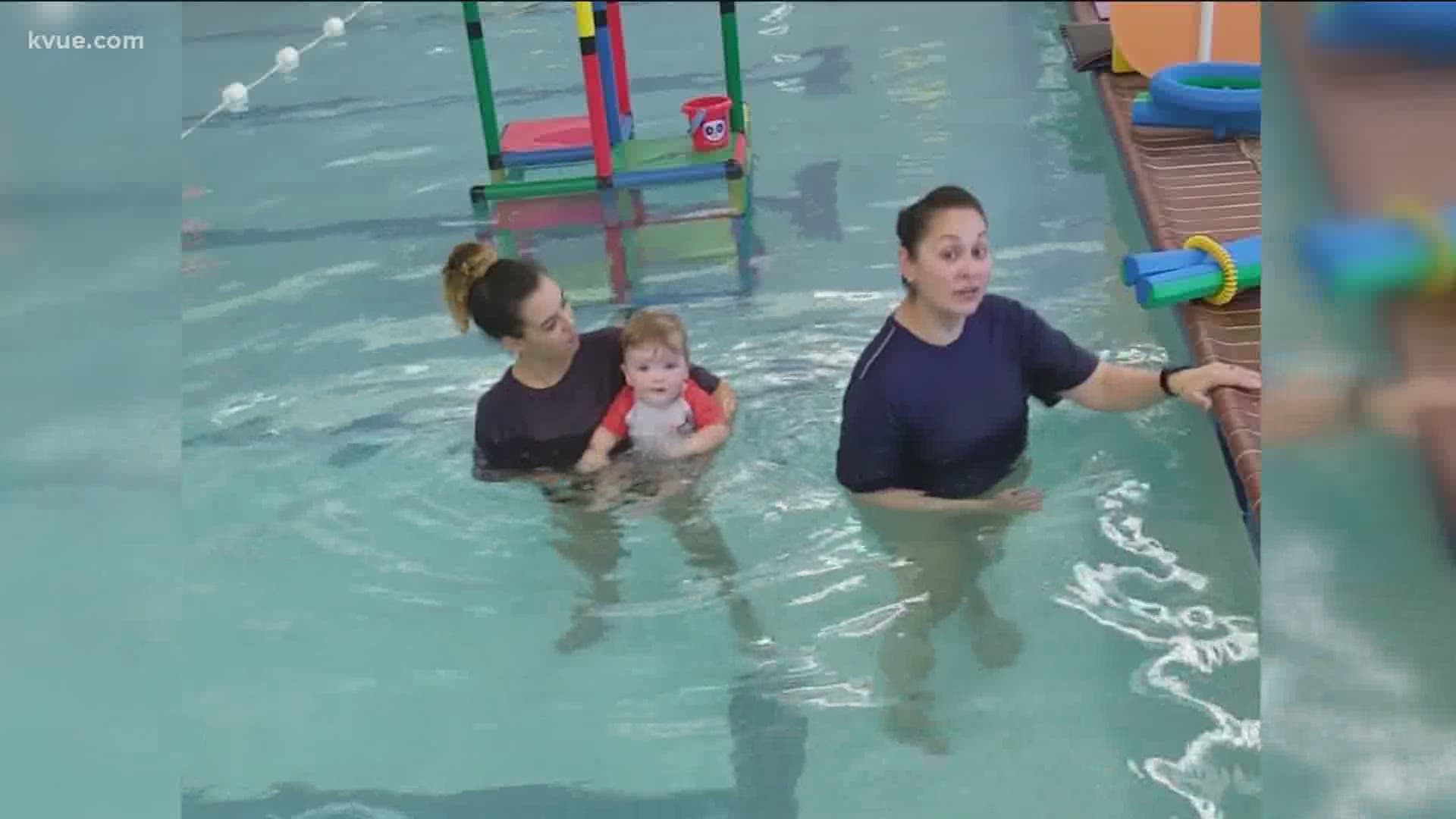AUSTIN, Texas — Health authorities have said swimming is a safe activity to do when it comes to the coronavirus, but while your family may be safe in a pool from COVID-19, there's another danger families need to be aware of: drowning.
Unintentional drowning is the leading cause of injury death in the U.S. for kids ages one to four, and the second leading cause of injury death for kids five to nine.
CEO of Emler Swim School Greg Laird said their mission is to eradicate childhood drowning. The swim school offers in-person swim lessons at their locations where they used CDC-approved cleaning products long before the coronavirus pandemic.
What is new at the swim school is their virtual swim lessons. The lessons are less focused on teaching kids to swim and more focused on teaching parents how to teach kids to swim.
RELATED:
"What we took was all of the learning over the last 45 years of us training teachers, and we tried to apply that in bite-sized videos and as much virtual hand-holding as we can do," said Laird.
The swim school offers different programs and levels depending on your swimmer. Lessons include videos from master teachers, Zoom calls and a community of other parents.
"What I didn't expect that we're beginning to hear is moms and even dads saying, you know, this individual time, this kind of skin-to-skin, emotional-bonding time, this trust element that's developing by just the time alone with the kid in the water is a real special thing," Laird said.
Laird's top three tips for keeping kids safe around the water:
1. Always have a water watcher.
It can be a parent. It can be a responsible teenager. Somebody who's constantly watching the water because it's quiet.
"A lot of the misnomers around child drowning are that it's loud and noisy and violent splashing," he said. "It's not at all. It's very quiet. A child will slip under the water and sink. It happens very quickly."
2. If you have a pool at home, make sure there is a fence.
Make sure your fence locks, so a child can't accidentally wander to the pool while no one is watching.
3. Be very cognizant.
Drownings can happen inside your home. It can happen in any body of water two inches or deeper.
"You don't need to be paranoid, you don't need to be afraid," said Laird. "Just be aware."
Laird adds that in a normal summer season, the big drowning problem areas would be lakes and pools, but since we all are home more often it's important to look out for the water around and just outside of our homes.
PEOPLE ARE ALSO READING:

